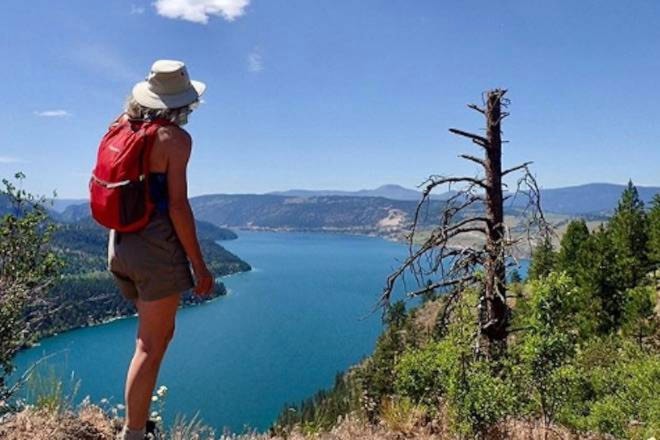The Okanagan escarpment, peaks and valleys were formed sometime between 9,000 and 11,000 years ago when glacier activity during the Pleistocene Epoch carved out what we now know as the Okanagan Valley. (Pleistocene Epoch was an age that began approximately 2.6 million years ago and is anachronistic with the most recent Ice Age, according to Kim Ann Zimmermann of Live Science)
The leftover grinded silt from the movement of the glaciers was eroded by Earthly elements and created the deltas in which Penticton, 91���Ѽ and Vernon are now located. Beside them, the Swan, Kalamalka, Skaha, Vaseux and Osoyoos lakes, according to James Marsh of the Canadian Encyclopedia.
The region was first walked upon by the Okanagan of the Interior Salish, who gave the valley its name. Okanagan translates as “place of water,” wrote Marsh.
READ MORE: Top stories of the week: McCurdy, small businesses, weed and skivvies
Elder from Westbank First Nation, Pamela Barnes, whose ancestral name means, “the coming of a storm and the coming of change,” explained the relationship between the Indigenous community and what the Okanagan lands mean to them at a Journey Home event earlier in the summer.
“Our lands are made up of the blood and the bones of our ancestors for thousands and thousands of years,” she said. “It’s all sacred to us.”
Barnes said First Nations people do not see themselves as owners of these lands “in the way that newcomers have defined ownership.” They see themselves as borrowers from their great ancestors.
READ MORE: Using scrap materials, man builds workout equipment at B.C. tent city
READ MORE: Canadian officials flagged 9000 food items from China with ‘problems’ over 2 years
“There’s a very big difference between the concept of ownership and the concept of borrowing,” she said, grabbing the necklace that hangs from her neck. She explained how she can sell, give away or damage the necklace because she owns it, rather than borrowing it, in which case her actions would need to change. It is not hers, she must return it in the same, or better, condition than when she first received it.
“It’s more like holding (these lands) in trust for the future generations,” she said. “We have responsibilities.”
In about 1840, European missionaries built their first settlement near the northern tip of the Okanagan Lake. Almost 20 years later, they established themselves in 91���Ѽ, according to Marsh.
In 2019, inhabitants share the expansive 200 km long and 20 km wide valley, known for its spectacular views, backyard hikes and harvestable soils—although the first apple trees were planted near Osoyoos around 1857, Marsh accords that the 1930s were truly the dawn of fertile lands that replaced the quasi-desert.
Now, between the Central Okanagan, North Okanagan and Okanagan-Similkameen regions, the valley has approximately 362,258 residents, circa 2016, according to the Canadian 2016 Census.
READ MORE: 91���Ѽ senior speaks out about care at KGH
David.venn@kelownacapnews.com
Like us on and follow us on .



